The Birds of America
The Library is privileged to own a copy of The Birds of America, one of the rarest and most beautiful books in the world.
In 1820, artist John James Audubon made it his mission to paint every species of bird in North America. The result was a stunning collection of hand-coloured prints. The Library's copy has been the jewel in our collection since Guille and Allès's day.

Audubon's The Birds of America
Our Head of Marketing Adam Bayfield explains more about the Library's copy of one of the world's rarest and most spectacular books.
Birds of America - the story
American artist and naturalist John James Audubon (1785-1851) shared his passion for birds through his writing and, most especially, his art. In 1820 he declared his intention to paint every species of bird in North America. The result was The Birds of America, an astonishing collection of 435 life-size watercolour prints.
Published between 1827 and 1838 in a series of folios, the book made an immediate splash. Thanks to Audubon’s insistence that every bird be illustrated life-size, the finished article proved to be enormous, with the pages (known as Double Elephant Folios) almost one metre high. Partly as a result, no more than 200 complete editions were ever produced, and very few remain today - making it one of the rarest and most coveted books in the world.
Audubon - his methods and legacy
Audubon was and remains a controversial figure, not least because his method required killing the birds he wished to paint. After shooting enough birds to fill a basket, he would pick the best specimen, then use wires and threads to stage them in lifelike poses. This practice was frowned upon by many people even at the time, but ironically the book itself has endured as a reminder of the beauty and fragility of the natural world, and the importance of conservation.
Six of the species in the book are now extinct, including the Carolina Parrot. The last Great Auk died in 1844, while Audubon was still alive, and not long after he painted it.

The Birds of America did not earn Audubon the riches he’d hoped. At a cost of 2 guineas per set of 5 (approximately £174) it was always going to be a rare book, affordable only for rich subscribers and institutions. Moreover, many subscribers gave up over the course of the 11 years it would have taken them to collect all the plates. Audubon had hoped for 300 subscribers – in the end he only managed 175.
Audubon died bankrupt in 1851. More financial trouble for the family after his death saw his son John Woodhouse Audubon sign over the rights to all publications before his death in 1862. Meanwhile, Audubon Sr’s widow Lucy Bakewell was forced to sell her husband’s bound folio of The Birds of America in 1861, and the original watercolours in 1863. In 1870, the original copperplates were sold for scrap. The teenage son of the plant manager recognised what they were and managed to save 78, but the rest were destroyed.
Bien Edition
The Library’s copy of The Birds of America is a ‘Bien Edition’, a special reissue of Audubon’s work produced by his youngest son, some 20 years after the original was published.
In 1858 John Woodhouse Audubon embarked on a project to reissue his father’s book, selling it via subscription for around half the price of the original. His intention was to produce 44 separate parts, with 10 images in each. The edition derived its name from the hiring of New York printer Julius Bien, a pioneer in the new field of chromolithography – a technique for making multi-colour prints using chemicals. The original Havell edition had been printed in black and white, then finished with watercolour paint; in this new edition the colour would be printed directly, promising a greater degree of accuracy.
In the end the project was never finished, with production ending prematurely due to the outbreak of the American Civil War in the 1860s. Only 15 parts were ever issued, with a total of 150 images that were bound together into this single volume.
Although not as valuable as an original edition, the Bien Edition is even rarer. Less than 100 volumes were printed, and it’s thought that only around 70 survive today - making it the rarest edition of one of the world's rarest books.
Audubon Print Comparison
The Joel Oppenheimer Gallery in Chicago explores the differences between the Havell (original) and Bien editions of The Birds of America.
Audubon's Journals
"Far away to seaward we spied a flock of Flamingoes advancing in 'Indian line', with well-spread wings, outstretched necks, and long legs directed backwards."
Listen to extracts from Audubon's journals, 1820s-1840s, performed by Guernsey History in Action.
The Birds of America highlights
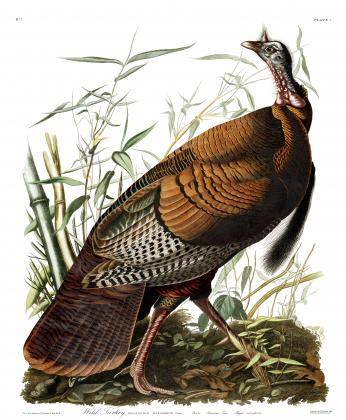
Wild Turkey
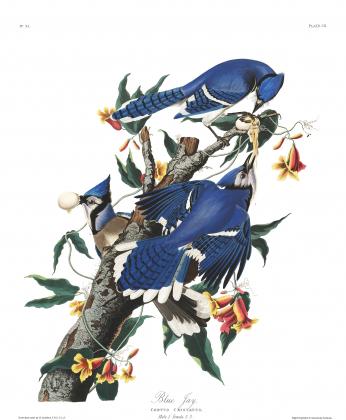
Blue Jay
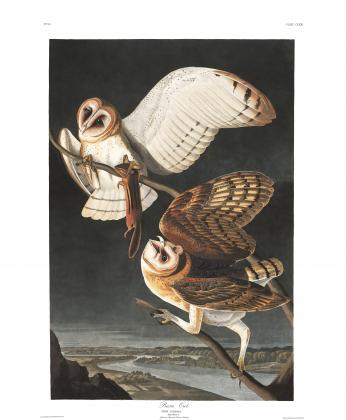
Barn Owl
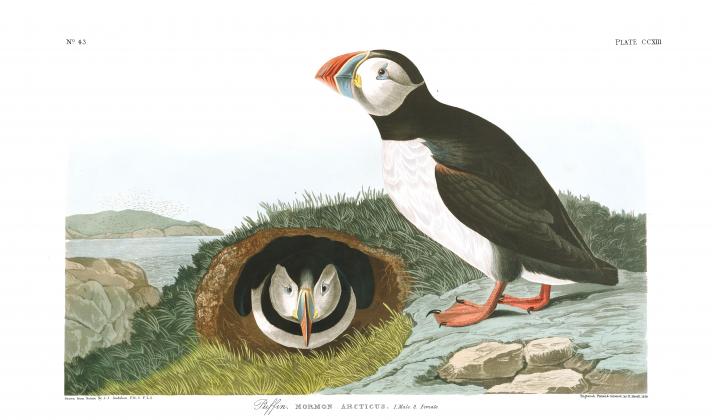
Puffin
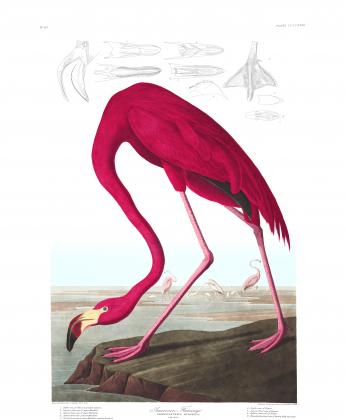
American Flamingo
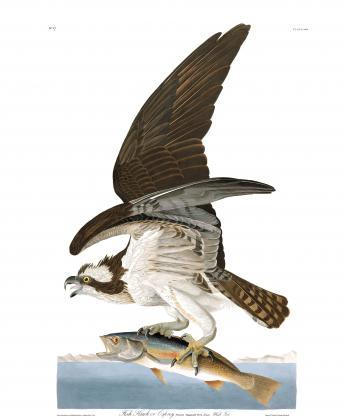
Osprey
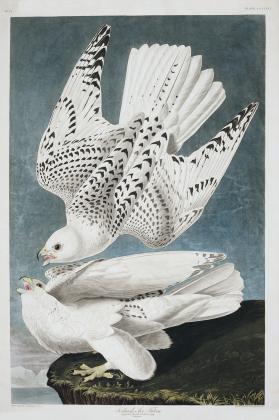
Iceland Falcon
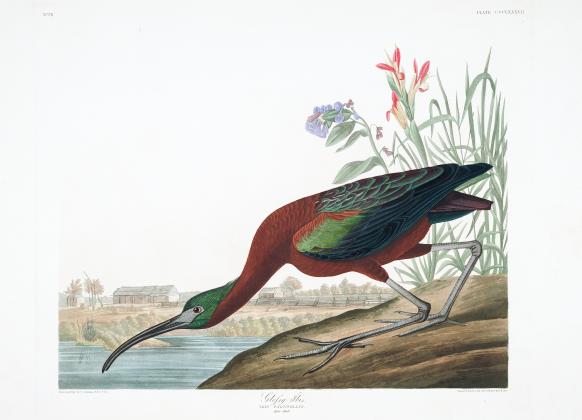
Glossy Ibis
